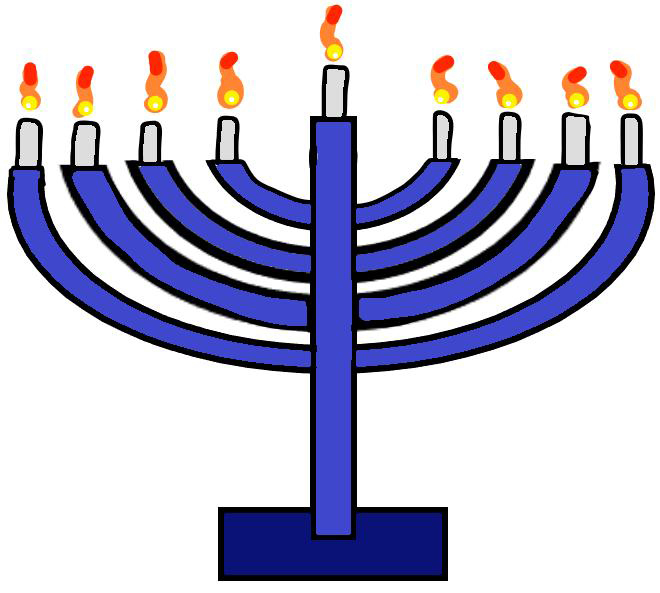The Captivating Chronicle of the Chanukiah, a Jewish Symbol of Resilience
December 16, 2022
A shining centerpiece, a balanced candelabra. Nine candles, with one higher than the rest: the Chanukiah, a representation of light in a dark time. Most are aware of the Chanukiah (most often called a menorah), but few know of its history, nor the difference between the Chanukiah, used during Hanukkah, and the menorah it was based off of.
First, the symbol menorah and the candelabra used in the celebration of Hanukkah are different. According to Time Magazine, both may be called a menorah, but the one used in Hanukkah’s celebration can also be called a Chanukiah (with differing spellings). The menorah only has seven candle holders while the Chanukiah has nine (content.time.com).
So, what exactly is the (symbol) menorah? When and how was the menorah created? Junior Jaidyn Corbett said, “This seven branched oil lamp used in ancient times is a very sacred and majestic object.” According to History Today, the menorah has been in use for longer than any other religious symbol in the western world. It dates back to the lifetime of Moses (1391-1271 BC), and is even older than the Star of David (historytoday.com).
“The seven-branched menorah was originally found in the wilderness sanctuary and then later on the Temple in Jerusalem and was a popular motif of religious art in antiquity,” according to Britannica. In the Bible (Exodus 25:31), it says the menorah was to be forged out of a single piece of gold and have six branches, three out of each side. The cup atop the central shaft is somewhat elevated to signify the Sabbath (Shabbat), a day of religious observance and abstinence from work. The flower blossom shaped cups suggested the tree of life (britannica.com).
The Chanukiah has eight candles, along with one in the middle known as the shamash. The shamash is used to light one candle (left to right) for each day during the celebration of Hanukkah. “This festival celebrates the purification and rededication of the Second Temple in Jerusalem in 164 BC, after the successful Maccabean-led revolt against the invading Seleucid Greeks,” according to History Today (historytoday.com).
A Mount Everest Academy student, Junior Maital Meltzer said, “[This observance represents] a story about how one little jar of oil miraculously lasted eight days instead of one.” The significance and story of this practice dates back to the Seleucid Empire (312BC to 63BC). Corbett explained that during Antiochus’s rule in the Seleucid Empire, Jewish people, part of the Second Temple of Jerusalem, were forced to stop their religious practices in favor of practicing Greek religion. She said, “[They] had nothing to bring light or warmth in their homes when trying to hide themselves and their practice of religion because they were being persecuted. They lit the menorah and expected it to only bring them warmth and light for one day. Instead, it stayed lit for eight days. In Judaism, we believe that this was a miracle from God and that he helped us through this time to bring light and warmth back to Jerusalem.”
Though many know of the symbol menorah and the Chanukiah, most don’t know the difference between the two. While both represent Judaism, the Chanukiah represents a miracle and the strong resilience of the people during a time of religious oppression and persecution.


